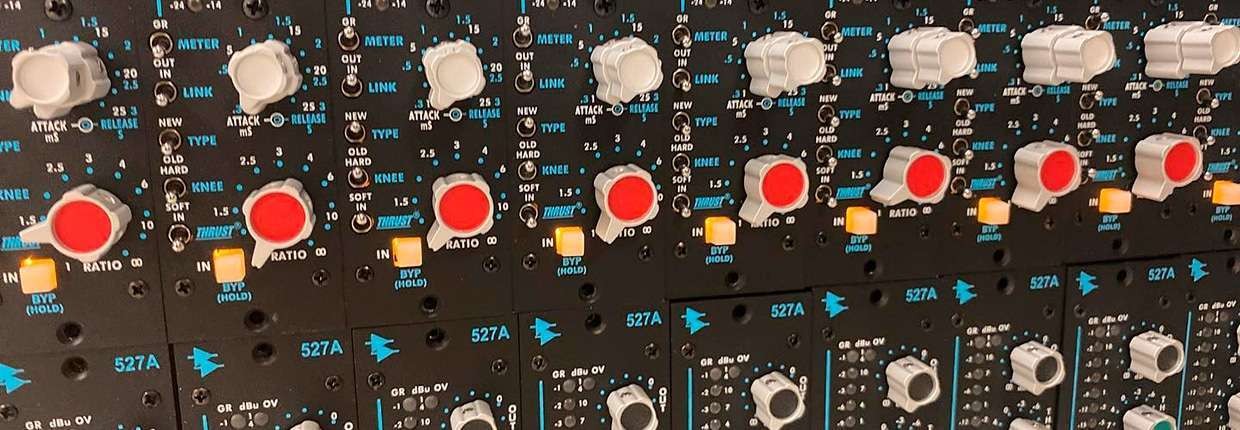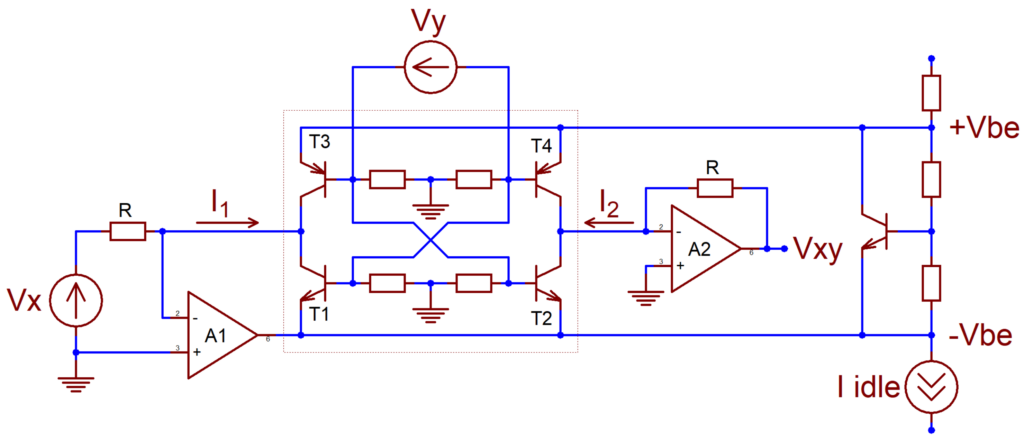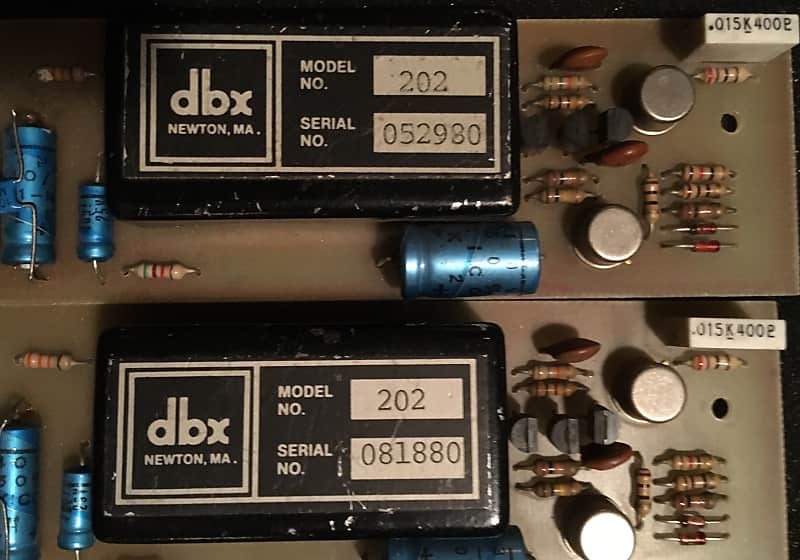Recording, Mixing and Mastering
Published on 14/03/2022

We talked about Compressors in a post dated August 2020. Here we shall put our attention here on the newest technology to get the audio dynamic under control. The VCA compressor was developed by David Blackmer in a period that went from 1970 and 1973.
The first applications of this technology succeeded in several areas such as: transient restore, noise reduction systems, subharmonic synthesizers other than, obviously, the compression itself. All those applications were well represented in the products by the Blackmer’s company: the dbx.
With this technology the gain control is realized by using the non linear part of the junction’s transistor curve with a circuit (named Blackmer Cell to recognize the inventor’s contribution) which has its gain controlled by a voltage (Vy in the picture) applied to the Control Pin.

An amplifier that works following this principle is called Voltage Controlled Amplifier or VCA.
First VCAs were made by discrete components in specific housing. The first dbx compressors (but also, for instance SSL) were realized in this way. Later on the circuit was implemented with integrated circuits (produced by That).

Having available a control voltage to influence the cell’s gain many applications can be done. This is the reason why those compressors have a lot of options and possibilities to modify incoming signals.
Many applications are possible. One could be to control the dynamic of the lower level signals (instead of the higher) leading to Noise Gates or Expanders. This is the case of the SSL E Series Dynamics Module. Another realizable function is the Gain Reduction Limiting (GRL) which applies an upper limit (user defined) to the gain reduction to avoid overcompression. The unit Elysia mpressor 500 has, among others, this possibility.
Also for what concerns the timing control the VCA is able to have wide ranges for both attack and release time and the evolution curves can be adaptive to follow the incoming signal evolutions.
All those possibilities make the VCA compressor usable in practically all the audio fields.
Vocals, bass, percussions, keyboards, there is no instrument that doesn’t benefit by the application of some VCA dynamic control. The VCA sound tends to be clean with the color coming only from the inherent harmonics generated by the compression curve.
Using VCAs on the stereo bus enhances the cohesion of the program. Engineers say that they “glue” the instruments together. The perceived loudness increases and so does the impact of the song to the listeners.
This is a very useful application and, in practice, there is no mix that doesn’t benefit from a Master Bus and/or a Drum Bus VCA compressor (often in parallel for the latter).
Typical devices for bus applications are SSL G- Series Bus Compressor, l’API 2500+ or Tierra Audio Gravity VCA Compressor just to give some examples.
As you all know, API Audio has invented the VPR500 standard giving a great boost to the modular approach in audio processing.
Their first released compressor (the 525) was realized with FET technology.
Later on we got the 527, actually in its A release, which is a VCA compressor.
The 527A has five detented handles to control (from top to bottom) Output level (Out), Threshold (Thresh), Attack (Attack) and Release (Release) and, at last, the compression ratio (Ratio).
It is worthwhile to mention that the Gain make up, on the 517, is automatic. The Out control is then to be thought of as an Output Fader.
All the parameters have a wide range making the unit suitable for several applications.
Further modifications can be applied via the six available switches to modify (from top to bottom):
The Link functions allow two or more compressors to share the same side chain control signal to use the devices on multiple tracks applying the same processing on every signal.
The sensing circuit can get the control signal from the input (Feedforward) or from the output (Feedback). In the first case the system gets faster and more capable of follow the transients. In the other case (the one more traditional) the circuit is more relaxed and gives a smoother sound.
The compression curve can evolve softly (soft) in the gain change through the threshold or get a more abrupt variation (hard) being more aggressive on the sound.
The Thrust circuiti is an API patent meant to filter the low frequencies of the side chain in a very specific (and effective) way. This function allows a lower impact of compression on low frequencies experienced, for instance, with bass or kick sounds.
The release A of the 517 implements the True Bypass if needed or the traditional compression exclusion to allow the signal to pass through the classic 2510 and 2520 op amps and the output transformer. The other add on of the A release is a better accuracy in the meter indication.

Given all those possibilities, it is clear that there is no situation in which the API 527A cannot be used.
The sound is quite clean with all the API pedigree that contributed in making the history of Rock in the last decades.
Together with the API 550A equalizer, they can do everything and there must be a reason why API has put the two units in its Channel Strip.
We are actually working in a mix where two of the channel strips are made by API 550A and API 527A. They are being assigned to kick and snare. We had previously had the chance to test them with very good results on guitars (both acoustic and electric) and vocals.
The sound is rock and “in your face” but we believe that the 527A can be used also in softer contexts such as acoustic and pop music. Here is where the soft knee becomes useful to make less evident the compression effect.
So, this API 517A is a very versatile device while still being within the API’s tradition. Keep it in mind!
Join us today and get 5% off your next order!

Empty cart